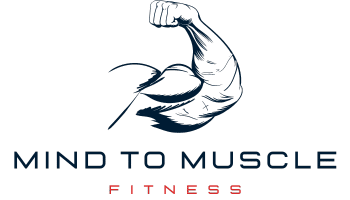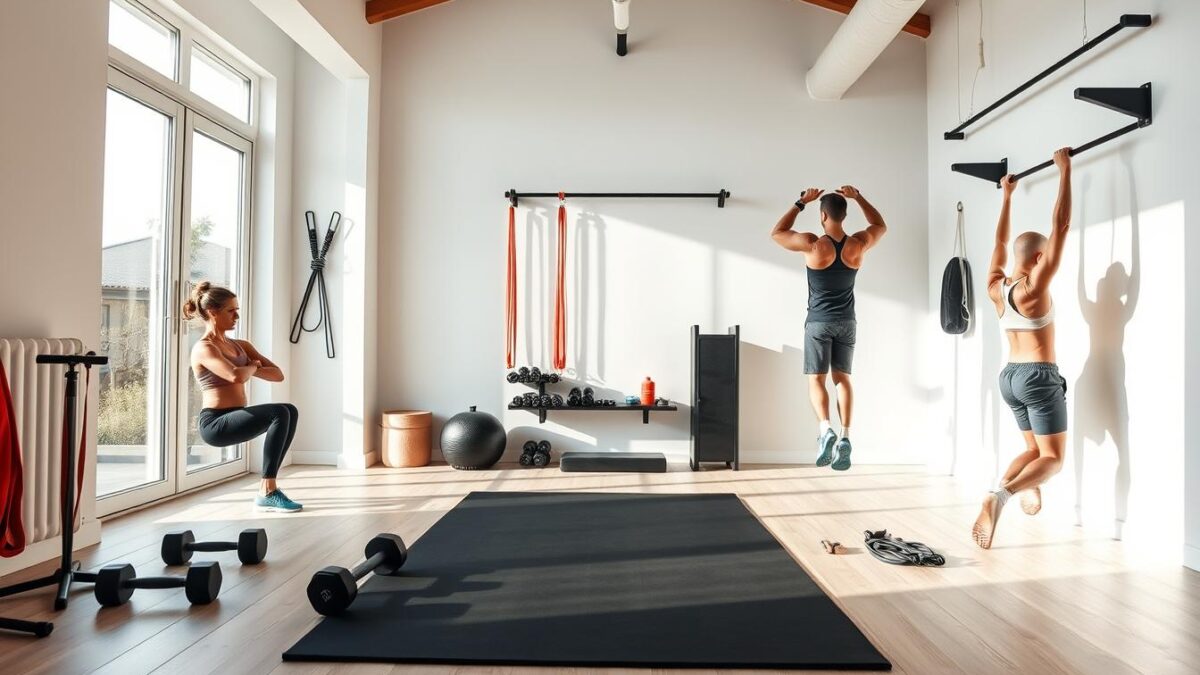
The Best Back Exercises
Building a strong, powerful back is essential for both aesthetics and functional strength, yet it’s a goal that eludes many. It’s not just about looking good — mastering top back exercises can transform your performance across a spectrum of physical activities. Let’s dive into the best moves for back muscle growth that will fortify your foundation and enhance your posture.
Broaden Your Horizons with Premier Back Movements
Say goodbye to stagnation; the ultimate back-building regimen awaits you. By integrating a variety of exercises targeting the latissimus dorsi, rhomboids, and traps, you’re on track to achieving that coveted V-shape. Each movement is a stepping stone to elevating your strength and sculpting your upper body.
Unlock Your Potential with Progressive Overload
Variety is key, but so is progression. Top-tier back exercises are not static; they evolve with your strength. Implement the art of progressive overload — gradually increasing the weight or intensity of your exercises — to keep your muscles challenged and growing. Whether you’re a beginner or a seasoned lifter, this principle is your ticket to continuous improvement.
Embrace the Pull for Ultimate Growth
Pulling exercises are the cornerstone of any serious back workout routine. From pull-ups to rows, these compound movements engage a multitude of muscles, ensuring a comprehensive back workout. Incorporate a mix of vertical and horizontal pulls to activate different muscle fibers and optimize development.
Spotlight on Technique for Maximum Gains
Precision beats power; technique trumps brute strength. Ensuring flawless form is non-negotiable for harnessing the full potential of each back exercise. It’s the difference between mediocre results and a back that commands attention. Remember, quality reps build quality muscle.
Seamless Integration for a Balanced Physique
Balancing your workout plan is vital — synergize your back workouts with supporting exercises. A symmetrical physique isn’t just about a massive back; it’s about creating harmony throughout your body. Incorporate antagonistic moves like chest presses to maintain equilibrium and prevent imbalances.
Step Up Your Recovery Game
Muscle growth doesn’t stop when you leave the gym. Optimal recovery is as crucial as the workout itself. Fuel your body with proper nutrition, prioritize rest, and consider techniques like stretching or foam rolling to support muscle repair. It’s the silent hero of your back-building journey.
Unlock the door to a mighty back with this arsenal of exercises designed for peak performance and growth. Let this guide be your blueprint to a stronger, more aesthetically pleasing back that powers you through life with confidence and vigor.
Essential Facts About Best Back Exercises
- Target multiple muscle groups.
- Improve posture and stability.
- Enhance functional strength.
- Can be done with minimal equipment.
- Include both pulling and rowing movements.
Benefits of Best Back Exercises
Back exercises build a strong foundation. They help in daily activities and sports performance.
Regular training reduces back pain. It also prevents future injuries.
Pros and Cons of Implementing Best Back Exercises
Pros:
- Increase muscle mass.
- Boost metabolic rate.
- Improve balance and coordination.
Cons:
- Poor form can lead to injuries.
- May require a spotter or professional guidance.
Comprehensive Back Workout Plan
| Exercise | Sets | Reps | Rest Interval |
|---|---|---|---|
| Pull-Ups | 4 | 8-12 | 90 seconds |
| Bent-Over Barbell Rows | 3 | 6-10 | 90 seconds |
| One-Arm Dumbbell Rows | 3 | 8-12 per arm | 60 seconds |
| Seated Cable Rows | 3 | 10-15 | 60 seconds |
| Lat Pull-Downs | 3 | 10-15 | 60 seconds |
| Deadlifts | 3 | 5-8 | 2-3 minutes |
Please ensure proper form to maximize muscle engagement and minimize the risk of injury.
Common Mistakes and Corrections
Using too much weight can compromise form. Focus on proper technique, progressing gradually.
Not engaging the back muscles fully during exercises like lat pull-downs is another classic error. Envision squeezing your shoulder blades.
Proven Beneficial Techniques
From personal experience, integrating deadlifts significantly enhances overall back strength and size. “The deadlift recruits every major muscle group in your back,” a seasoned coach mentioned, reinforcing this point.
Additionally, peers have noticed improved back definition after incorporating pull-ups into their routines. “It’s a foundational move for a powerful back,” says a fellow gym-goer.
What Should You Remember When Training Your Back?
- Begin with compound movements and finish with isolation exercises.
- Maintain a neutral spine to prevent strain on your back.
- Vary grip width and style to target different back muscles.
- Keep movements controlled, especially during the eccentric phase.
- Track your progress and adjust intensity as needed to keep improving.
Advanced Techniques in Back Training
Experienced lifters must innovate to sustain progress. Techniques like progressive overload and eccentric training are vital. Gradually increase weight or reps. Slow down the lowering phase of movements such as pull-ups or rows.
Customizing Back Workouts
Align your routine with goals. Hypertrophy requires moderate weights and higher reps. For strength, focus on heavy weights and lower reps. Use exercises like deadlifts and lat pull-downs accordingly. Modify your grip, range of motion, and equipment to challenge different muscle areas.
Combining Approaches for a Muscular Back
Incorporate compound and isolation movements. Begin sessions with multi-joint exercises such as t-bar rows. Follow up with isolation types, like dumbbell rows. This will ensure overall back development.
Nutrition and Recovery for Back Training
Post-workout nutrition is critical. Consume proteins and carbohydrates to aid muscle repair. Ensure adequate rest and muscle recovery. Sleep at least 7-9 hours. Consider supplements like BCAAs or creatine for enhanced recovery.
Expert Advice on Back Exercise
“Variety in your back routine is key,” states renowned coach Jim Smith. Incorporate different grips and angles. Periodically change your exercise selection to prevent plateaus.
Safety and Technique Preservation
Prevent injury by focusing on form. Engage your core during lifts. Avoid excessive swinging motions. Prioritize full range of motion over lifting heavier weights. Maintain controlled movements to maximize muscle activation and reduce strain on joints. Incorporating proper technique into your hamstring workout routines can improve strength and flexibility while lowering the risk of pulls or tears. Remember, consistency and patience are key to long-term progress.
Incorporating Cardio for Back Development
While typically overlooked, cardio can aid in back strengthening. It enhances blood flow and recovery. Include low-intensity steady-state (LISS) or high-intensity interval training (HIIT) sessions weekly.
Remember, consistent effort and a smart approach to back training are essential to seeing results.
FAQ
What are the most effective exercises for building a wide back?
Deadlifts, pull-ups, and lat pulldowns are top picks for widening your back. They target the latissimus dorsi, promoting muscle growth and width.
Can I train my back muscles without weights?
Absolutely. Bodyweight movements like pull-ups, inverted rows, and supermans are excellent for strengthening your back without the use of weights.
How often should I work out my back?
A good starting point is twice a week, allowing sufficient recovery time for muscle growth. Listen to your body’s needs and adjust accordingly.
What’s a common mistake to avoid during back workouts?
Avoiding full range of motion is a typical error. Ensure you extend and contract your back muscles fully in each exercise for maximum benefit.
Is it necessary to include both compound and isolation back exercises?
Yes, for a balanced workout, incorporate both types. Compound exercises build overall strength while isolation movements target specific back muscles.
How long does it take to see results from back exercises?
Results vary, but with consistent training and proper nutrition, initial changes can often be noticed within 4-6 weeks.
Are back exercises safe for someone with lower back pain?
Some are, but it’s crucial to consult a healthcare professional before starting any workout routine, especially with pre-existing conditions.
What is the best way to warm up for back exercises?
A dynamic warm-up with exercises like arm circles, band pull-aparts, and light rowing can prepare your muscles and reduce injury risk.
Do back exercises help improve posture?
Definitely. Strong back muscles support the spine, which can correct poor posture and alleviate discomfort associated with slouching.
How can I prevent plateauing with my back workouts?
To avoid plateaus, regularly vary exercises, increase weight or reps, and incorporate different training techniques to continually challenge your back muscles.
—
Conclusion
Strengthening your back is crucial for a balanced physique, enhancing posture, and preventing injuries. Selecting top-notch back exercises can elevate your workout, contributing to overall strength and functionality. Now, take these insights, fire up your determination, and carve the powerful back you aspire to with conviction and persistence.



